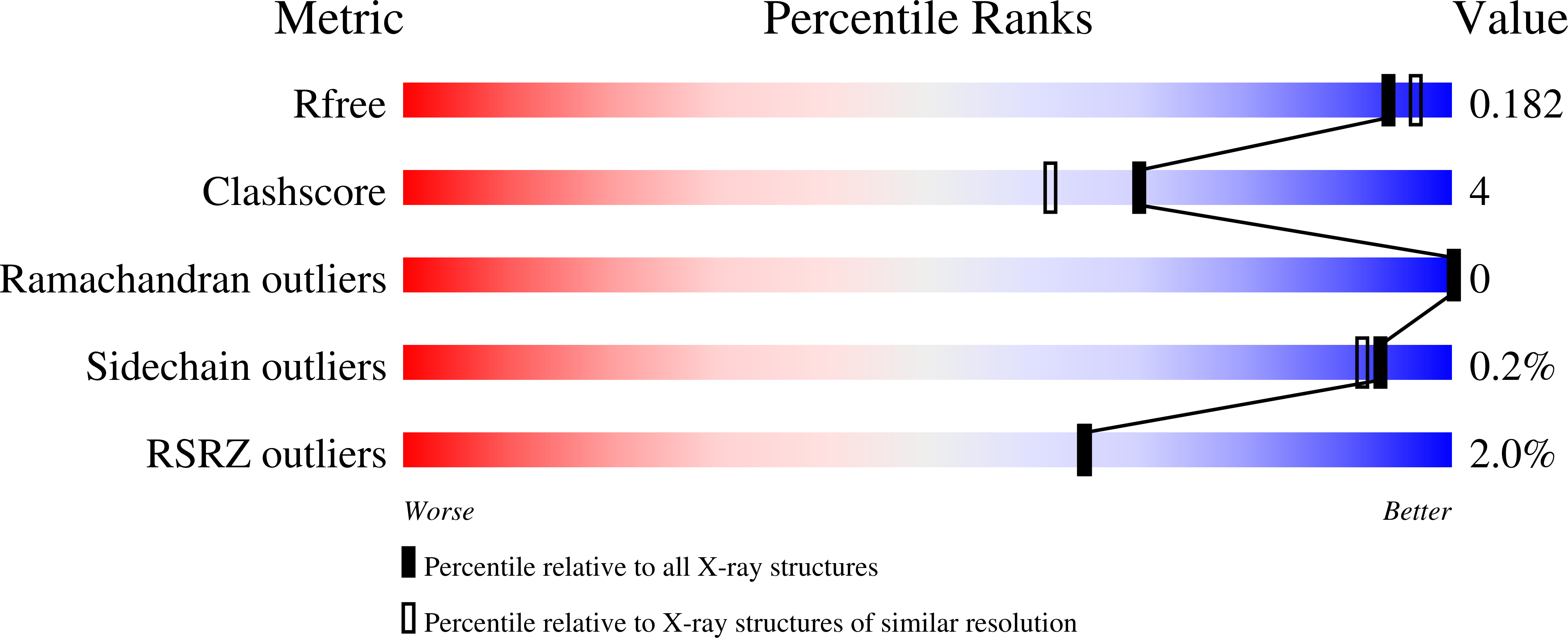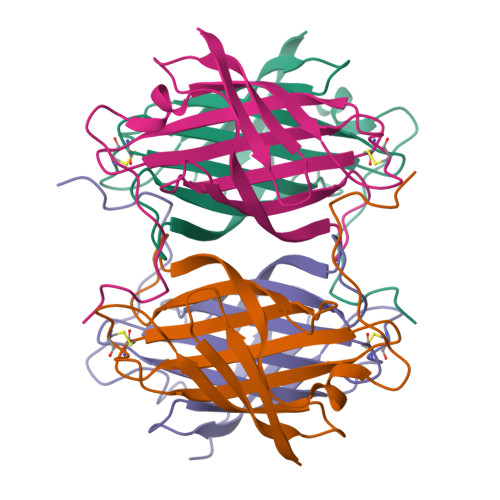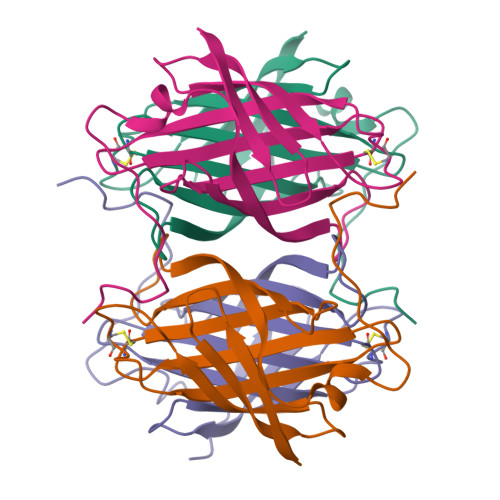Structure of Bradavidin - C-Terminal Residues Act as Intrinsic Ligands.
Leppiniemi, J., Gronroos, T., Maatta, J.A.E., Johnson, M.S., Kulomaa, M.S., Hytonen, V.P., Airenne, T.T.(2012) PLoS One 7: 35962
- PubMed: 22574129
- DOI: https://doi.org/10.1371/journal.pone.0035962
- Primary Citation of Related Structures:
2Y32 - PubMed Abstract:
Bradavidin is a homotetrameric biotin-binding protein from Bradyrhizobium japonicum, a nitrogen fixing and root nodule-forming symbiotic bacterium of the soybean. Wild-type (wt) bradavidin has 138 amino acid residues, whereas the C-terminally truncated core-bradavidin has only 118 residues. We have solved the X-ray structure of wt bradavidin and found that the C-terminal amino acids of each subunit were uniquely bound to the biotin-binding pocket of an adjacent subunit. The biotin-binding pocket occupying peptide (SEKLSNTK) was named "Brad-tag" and it serves as an intrinsic stabilizing ligand in wt bradavidin. The binding of Brad-tag to core-bradavidin was analysed by isothermal titration calorimetry and a binding affinity of ∼25 µM was measured. In order to study the potential of Brad-tag, a green fluorescent protein tagged with Brad-tag was prepared and successfully concentrated from a bacterial cell lysate using core-bradavidin-functionalized Sepharose resin.
Organizational Affiliation:
Institute of Biomedical Technology, University of Tampere, Tampere University Hospital, Tampere, Finland.
















